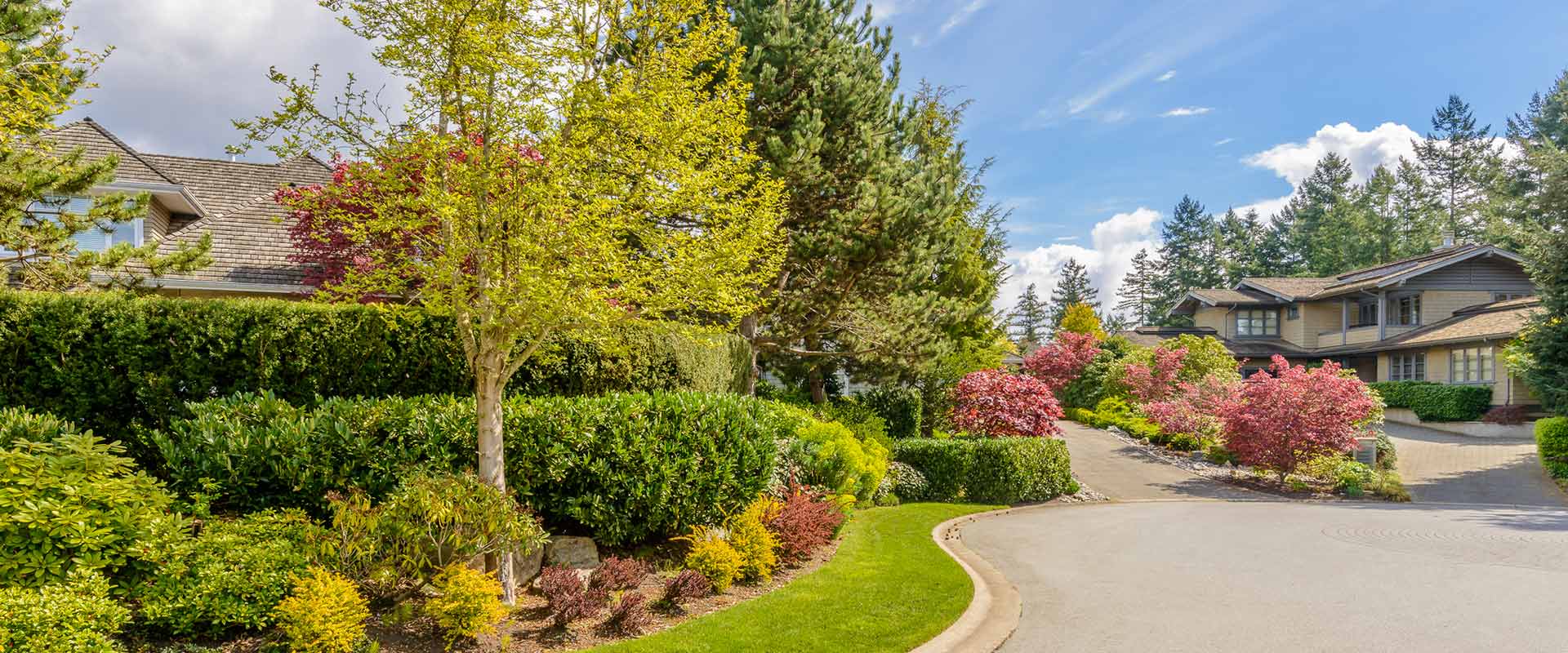Pruning young trees correctly helps them develop a strong structure, which keeps them healthier as they grown. Save money on future maintenance costs of your Seattle or North Bend property by getting young trees pruned.
Pruning Objective
The main goal of pruning young trees should be improving their structure. You also need to be mindful of how the tree may interfere with its surroundings as grows larger.
A few things to keep in mind:
- Every cut you make has the potential to change its growth.
- Poor pruning can cause damage that lasts a lifetime.
- When damage occurs, the tree grows over the damage, but the wound is contained within the tree for life.
Newly planted tree tips
When planting a tree, you should ONLY prune dead branches or ones that broke during planting. Any other pruning should wait 2 to 3 years as the tree needs to recover from the stress of planting. By then, the tree is established and will benefit from some structural pruning.
Role of trunk development
Good structure is dependent on the trunk and branch placement. Most young trees have a dominant upward growing trunk called the leader. The leader should not be cut back and should be taller than any secondary branches.
Sometimes a tree has 2 or more nearly equal-sized leaders called codominant stems. If this happens, one of them should be removed or shortened as permitting both to grow causes structural weakness.
Permanent branch selection
Most of the branches on a newly planted tree will be cut away to allow for clearance as the tree grows. For example, a tree by the road needs a minimum of 16 ft. to permit the passage of vehicles. In other situations, 8 ft. is enough to allow for people walking or mowing, etc.
Creating strong scaffold structure
Scaffold branches refers to a mature tree’s framework. The goal when pruning young trees is to establish a strong central trunk with well-spaced branches. This is cost effective because a strong tree needs less corrective pruning as it grows.
Trees growing in forests naturally grow this way because neighboring trees limit the number of branches that can grow. Some species develop this structure naturally while other species require more pruning to make this happen.
Branch spacing and balance
Both vertical and radially spacing and balance of branches are vital along with their angle of attachment. Ideally, permanent branches should be spaced apart about 3% of the tree’s grown height. Example: a tree that grows to 50 ft. should have 1.5 ft. of space between its branches.
The strength of the branch depends on its thickness and angle to the trunk. If the branch is about the same diameter as the trunk or limb from which it originates, it is more apt to break than those that are smaller in diameter.
Watch the angles
Narrow angles of attachment can enclose bark within a branch union (called included bark). This weakens the attachment and may contribute to it failing as it grows. It is best trimmed when small as the negative impact on the tree is less.
Proper balance can be had by keeping some branches in all directions around the trunk. Keep in mind that you do not want a scaffold branch growing directly above another scaffold branch.
Pruning tip
You do not want to remove too many branches since leaves aid in the production of food as well as storage. Cutting off too much of the canopy stresses the tree because it reduces its ability to nourish itself, which directly affects its growth.
As you can see, pruning young trees correctly is not an easy task. Improper pruning can cause damage that affects the tree for the remainder of its life. That’s why pruning is best done by a professional arborist.
Contact Eastside Tree Works for a pruning estimate from one of our ISA Certified Arborists.

